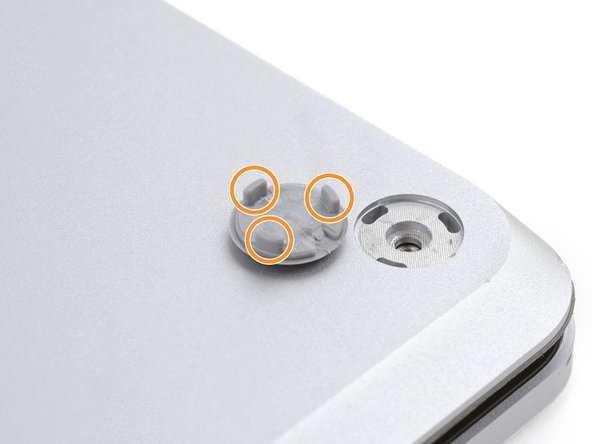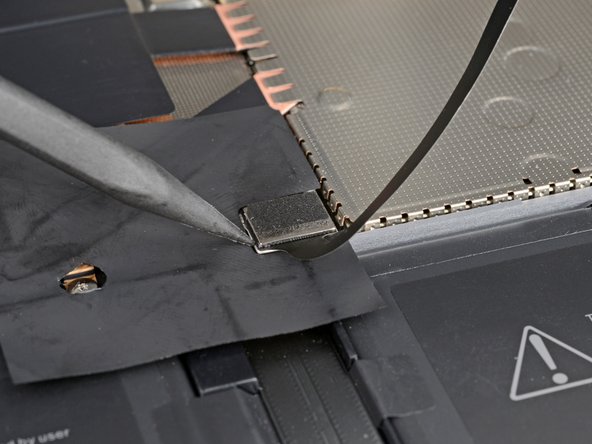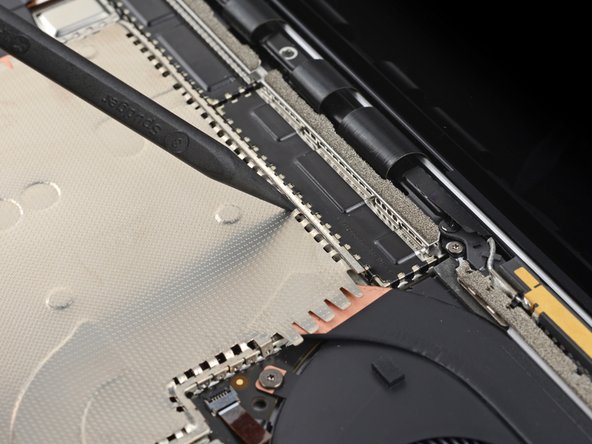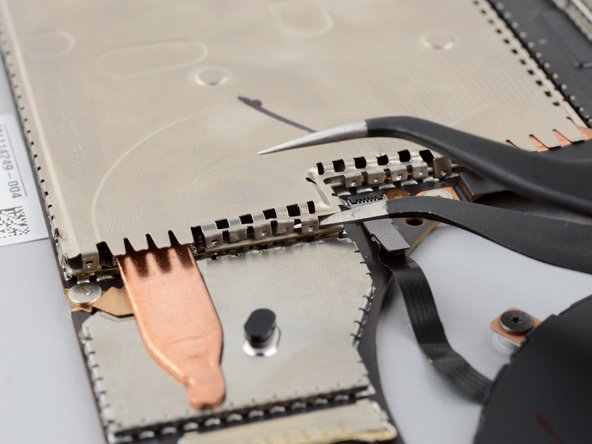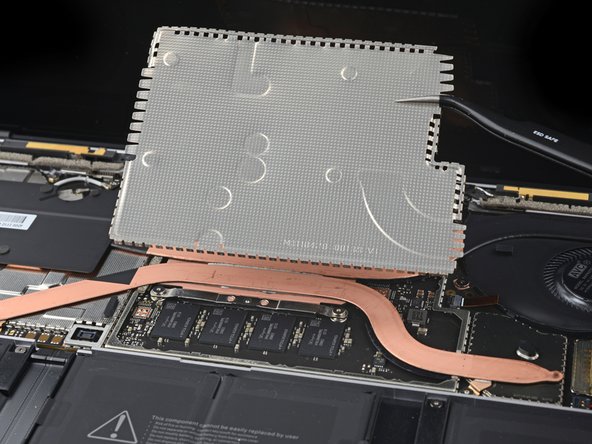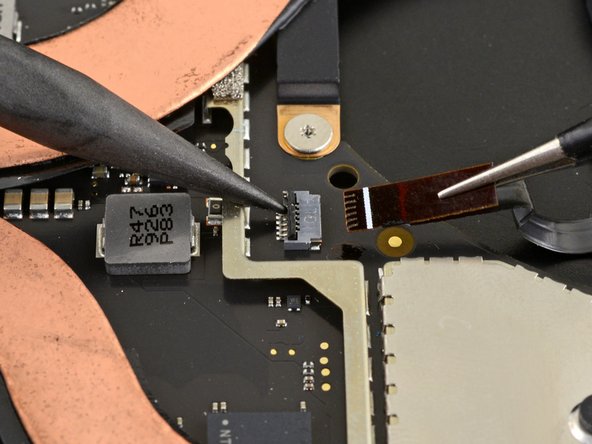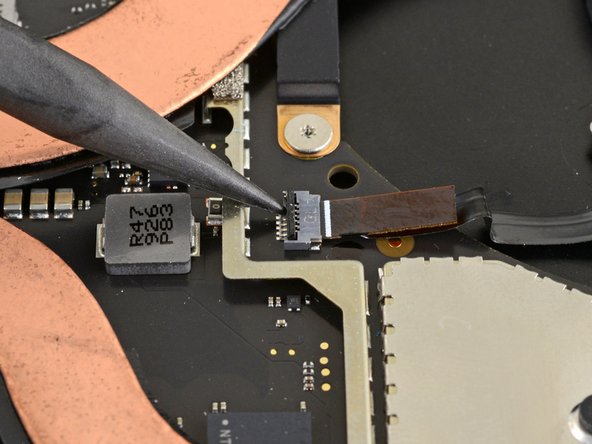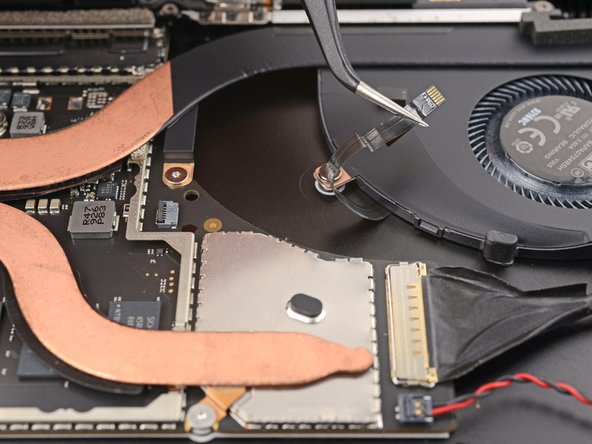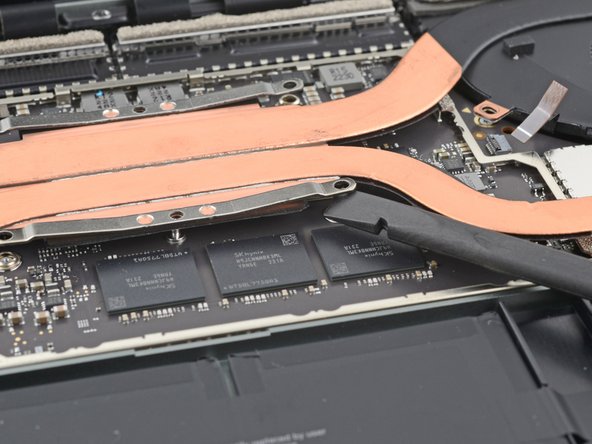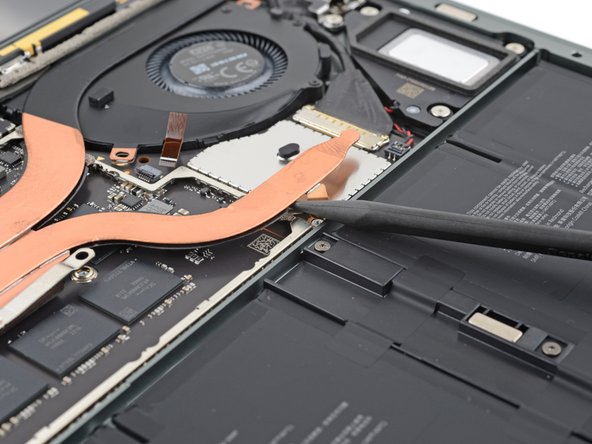Step-by-Step Microsoft Surface 4 15-inch Replacement Guide
Duration: 45 minutes
Steps: 24 Steps
Ready to swap out or clean up the heatsink and fan in your Microsoft Surface Laptop 4 (15-inch)? You’re in the right place! If your battery is puffing up like a balloon, take the necessary precautions to stay safe. Heads up—some pics might show a slightly different model, but don’t sweat it! The steps are still spot-on and super easy to follow.
Step 1
Before diving into this repair adventure, let your laptop’s battery dip below 25%. A fully charged battery could throw a fiery tantrum if it gets damaged, and we definitely want to avoid that!
– Disconnect all the cords, power down your laptop completely, and give it a moment to chill.
Step 2
– Flip your laptop over and lay it down with the backside facing up – this will give you access to the four rubber feet, and you’re one step closer to getting your device back in action!
Step 3
Each foot has a notch to make it easier to pry off the laptop:
– Time to get familiar with your laptop’s feet! The back feet recesses are the ones hanging out near the back edge of your laptop.
– Now, take a look at the front feet recesses – they’re the ones closest to the front edge, just chillin’ and waiting for you to start the repair.
Step 4
These feet pop off quicker than a jack-in-the-box—watch out so you don’t lose them!
– Slide one arm of your tweezers into the groove of one of those little feet.
– Give your tweezers a gentle twist and pop it up to break the adhesive seal and unclip the foot from your laptop.
– Time to say goodbye to that foot – remove it!
– Now, just rinse and repeat for the other feet.
Tools Used
Step 5
– This laptop sports two unique types of feet. When putting it back together, ensure each foot finds its rightful home in the recesses.
– Gently press the feet into their recesses to lock them securely to the frame.
– The rear feet come with a single center clip, keeping things simple.
– The front feet, on the other hand, have three clips and can only be reinserted in one specific way—no guesswork here!
– If the current feet aren’t sticking to the frame like they should, just peel off the old adhesive and add a little Tesa Tape where the old stuff used to be.
Step 6
– If those little feet are looking a bit worse for wear, grab some 8 mm rubber furniture pads:
– Carefully peel one pad off its backing.
– Position the pad over the foot cavity and press down firmly to make it stick.
Step 7
These screws have a tendency to strip if you’re not careful. Keep a steady, downward pressure while turning to avoid any trouble.
As you tackle this repair, keep an eye on each screw and make sure it finds its way back to its original home. You’ve got this!
– Grab your trusty T5 Torx driver and unscrew those four 3 mm bad boys holding the upper case in place. Let’s get this show on the road!
Step 8
– Carefully flip your laptop so the bottom is facing up and the screen is fully open. This will help you access what you need to get the repair done.
Step 9
Hey there! Just a friendly reminder: don’t go all out trying to yank off the upper case—it’s still tethered to the laptop by a cable.
Make sure the upper case is snug all around the edges. Any little spaces between the upper and lower case, especially near the screen, could lead to some screen mishaps when you close it up!
The top cover is held in place by magnets.
– Get a grip on the top edge of the upper case, just above the keyboard, and gently lift it straight up to release it – easy does it!
– Now, carefully lift the bottom edge of the upper case up and away from the laptop, being mindful of the ribbon cable underneath – don’t stretch it too far!
– When putting it all back together, simply lower the upper case onto the lower case until the magnets click into place and it lies flat – you got this!
Step 10
The cable connecting the keyboard and touchpad to the upper case is like the lifeline of your laptop. Keep it snug and secure for a smooth experience!
– Gently slide the pointed end of a spudger under one side of the magnet connector and give it a little nudge to pop it off. You’ve got this!
– When you’re ready to reconnect, just line up the magnet connector over its socket with the cable pointing down towards the bottom of the laptop. A firm press will lock it in place. Easy peasy!
Tools Used
Step 11
– Let’s get started! Carefully remove the upper case and flip it over, keyboard-side down, onto a clean and flat surface.
Step 12
With the screw out, your SSD will start to pop up at a bit of an angle – you’re making progress!
– Grab your trusty T5 Torx driver and unscrew that little 2.7 mm screw holding the SSD in place! You’ve got this!
Step 13
Avoid yanking it up at a sharp angle; that could put a hurt on the SSD and its socket!
Taking out the SSD also acts as a battery disconnect.
– Gently wiggle the SSD out of its cozy home and say goodbye for now.
– When it’s time to bring everything back together, slide that SSD in at a little angle – it likes to be stylish!
Step 14
– Peel off those two little black tape pieces hugging the bottom corners of the motherboard—one on the left, one on the right. They’re not doing much chilling down there.
– Keep that tape safe and sound! You’ll need it when it’s time to put everything back together.
Step 15
Do your best to keep the shield in good shape—it’ll need to go back on when you’re putting everything back together.
– Slide the pointed end of a spudger into one of the little gaps at the top edge of the heatsink shield.
– Carefully pry it up to pop those clips free and let the shield breathe a little.
– Keep the groove going and repeat this along the right edge.
– Now, take your tweezers and slide one arm under the bottom right edge of the heatsink shield.
– Gently lift it up to release the last few clips holding on for dear life.
Step 16
– Gently lift off the heatsink shield and set it aside.
– When it’s time to put the shield back, just press along the edges to snap the clips into place. Easy as that!
Step 17
– Take your trusty spudger and gently lift the locking flap on the fan cable ZIF connector. It’s like giving it a little nudge to say, ‘Hey, let’s get this party started!’
– Now, grab the fan cable pull-tab with your tweezers and smoothly pull the cable straight out of the connector. Think of it as a little dance move—nice and steady!
Step 18
The fan cable is held in place by some sticky adhesive, keeping everything snug and secure.
– Gently coax the fan cable away from the frame using your trusty tweezers or your fingers, and let it break free from its adhesive bonds.
Tools Used
Step 19
– Grab your trusty T3 Torx driver and let’s tackle those ten screws holding the heatsink in place:
– Two screws measuring 2.5 mm
– Three screws at 2.0 mm
– One lone screw at 3.0 mm
– Two screws that are 4.1 mm
– And finally, two screws at 3.4 mm
Step 20
– When putting things back together:
– Line up the heatsink with the centering peg on the motherboard.
– Secure the four CPU tension screws in an “X” pattern: top left, bottom right, top right, bottom left.
Step 21
This might require a bit of muscle. Just be sure to avoid bending those heat pipes!
Thermal paste keeps the CPU and heatsink cozy together for efficient heat transfer.
– Slide your spudger under the left heat pipe and gently lift it up.
– Pry it upwards to detach the left section of the heatsink.
– Do the same for the right heat pipe and CPU screw mounts until the heatsink is fully freed from the motherboard.
Tools Used
Step 22
– Gently nudge the right edge of the heatsink upwards, guiding it over the alignment peg that’s hanging out near the right side of the fan.
– With a light touch, pull the right edge of the heatsink away from the screen to free it from its cozy spot in the frame.
Step 23
Be gentle with the heatsink—those heat pipes are easy to bend! If it’s being stubborn, give it a little wiggle to loosen things up.
– Time to say goodbye to the heatsink! Carefully remove it and let’s keep moving forward.
Step 24
– You’re almost done! Compare your new replacement part to the original one to make sure everything matches up. You might need to transfer some remaining components or remove adhesive backings from the new part before installing it.
– To put everything back together, just follow these steps in reverse order. Easy peasy!
– Now that you’re done, be sure to properly dispose of your old parts by taking them to an R2 or e-Stewards certified recycler.
– If things didn’t quite go as planned, don’t worry! Try some basic troubleshooting or check out our Answers community for help.
– You did it! If you need help with anything else, you can always schedule a repair with Salvation Repair.
Tools Used
Success!











